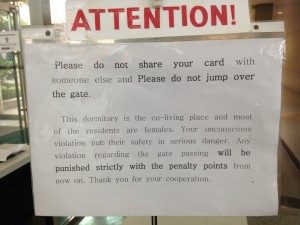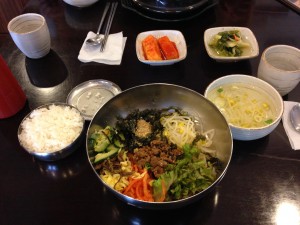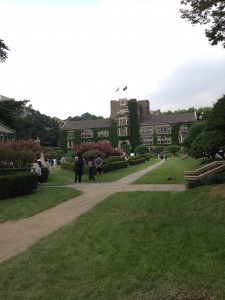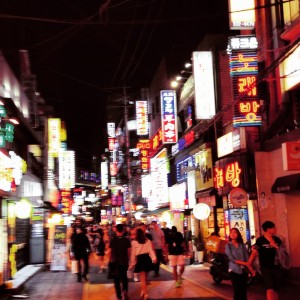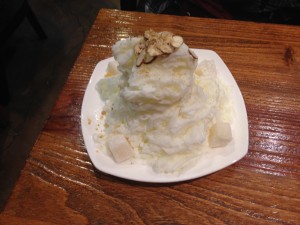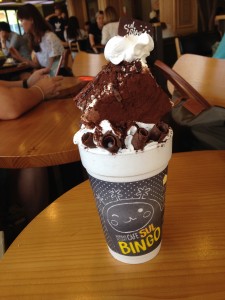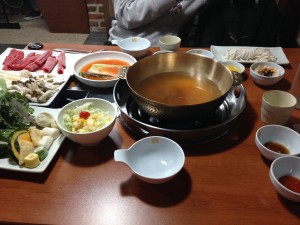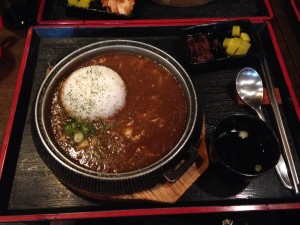What a long strange trip it’s been
I have been back from Korea for 8 days now, so I figure it’s now or never for some last-minute reflection on my time abroad. Please enjoy a final round my observations on Korean culture.
- People spit everywhere. If you stop to listen it’s as though the whole population is on the verge of launching into a sick beatbox solo, but the reality is much more off-putting. In the words of the brilliant David Sedaris: “I saw wads of phlegm glistening like freshly shucked oysters on staircases and escalators. I saw them frozen into slicks on sidewalks and oozing down the sides of walls” (from an essay entitled “Chicken Toenails, Anyone?”). Despite my initial discomfort with the habit, I can’t argue that it isn’t a necessary practice given the amount of pollution in Seoul. Though it’s nowhere near as bad as in China, on any given day Koreans don medical masks to protect their respiratory systems from the scourge of bad air and yellow dust.
- Capitalism has found it’s home in Korea and has evolved to the point of being an inescapable festering disease. The two movies I had the pleasure of seeing in Korea were preceded not by trailers for upcoming films, but by adverts for phone companies and cosmetics. The much-anticipated “Seoul International Fireworks Festival” was interrupted every 40 minutes or so for a literal commercial break. Which is to say, the fireworks were halted and large screens situated throughout the park in which the festival was held boomed out adverts for (once again) food, cosmetics, and phones. I would say that the rabid commercialism in Korea is comparable to be screamed at as you walk down the street, but sadly this is a very real and everyday occurrence as many shops have a person posted in the front with a megaphone 24/7 lest anyone’s mind stray for a moment.
- During my time in Korea I managed to visit a puppy cafe, a sheep cafe, and a cat cafe. There was also a raccoon cafe in Seoul, which I never managed to visit, though I can’t say I’m entirely disappointed. Raccoons are not native to Korea, but in my home country if I am ever struck by the desire to see a raccoon I can simply peek inside the nearest dumpster, thus the novelty of a raccoon cafe is a bit lost on me. I wouldn’t necessarily dissuade people from visiting animal cafes, simply because a lot of my friends (who like animals a lot more than me) had many a pleasant experience. However, I will say that the animal cafes I visited gave off a slight puppy mill-esque vibe. I have no doubt that the owners of the cafes took excellent care of the animals, nonetheless the fact that the furry residents remained inside for 99% of their lives in a space barely larger than the average prison cell was hard to overlook.
- Smoking is very common among Koreans, particularly men. Women smoke as well, but as they are the ‘gentler sex’ (as I am constantly reminded) their impropriety is kept more secret. Should one wander into a coffee shop in Seoul, sure enough you will find a smoking room on each floor. The majority of clubs- and many bars- allow smoking indoors, without the need to retreat to a discreet section of the building. Even airports have smoking rooms, because no one loves the smell of stale smoke more than people trapped on airplanes.
- There is little to no social welfare in Korea, which means that elderly people, should they lack the necessary funds or family for retirement, must continue to work at menial tasks until, well, they die. The most common menial task for the elderly of Korea is passing out flyers, often for various restaurants. These old women, with their jaunty plastic visors, stand for hours on street corners attempting to shove brightly colored flyers into the unassuming hands of the passing public. It would be quite a depressing situation if the women weren’t so alarmingly aggressive and persistent. Whatever modicum of sympathy I possess for the elderly women and their dire social/financial situation is quickly erased the moment one of them corners me and thrusts a fried chicken advert into my hand, causing me to drop everything else, all the while barking at me in Korean like a rabid chihuahau as I struggle to gather my scattered possessions.
- Another common pastime for the elderly, although I doubt it generates income, is to spend great lengths of time in the park on Yonsei’s campus collecting fallen chestnuts like a pack of deranged squirrels. Do they eat them? Are they simply cleaning the park out of the goodwill of their hearts? We may never know. Quite puzzling indeed. But I must say, I will miss the sight of the herds of elderly Koreans in their neon tracksuits rooting for chestnuts in the early morning as I make my way to my 9am class.
- Braces are more common for older people in Korea than in the United States. Not old old people, but mid-20s to late-30s seems to be the ideal windows for braces in Korea. Perhaps braces are not bankrolled by one’s parents and are only possible once young adults have generated adequate income of their own, thus the average age for braces-wearers has been pushed forward significantly. Whatever the case, in a country where people age with incredible grace, the predominance of braces among older people can make it quite difficult to determine someone’s age. Is the guy who bought you a drink at the bar 18 or 28? With braces it’s anyone’s guess.
Well, there you have it. My semester in Korea has come to a close. I’m not really the type for a bunch of clichéd reflection on how these last 4 months have been the most amazing/inspiring/challenging/incredible/yadda yadda yadda of my life, so just take my word for it, dear readers, I will not soon forget my time in Seoul (and I hope that my blog stands as living proof of this sentiment). Rather, let us turn our eyes to the future. In 2 short months, I will be jetting off to Buenos Aires for the final semester of my college career, and yes, you guessed it, I will be blogging my way through a haze of steaks, tango, and excellent wine (and of course, rigorous academics).
Until next time.
